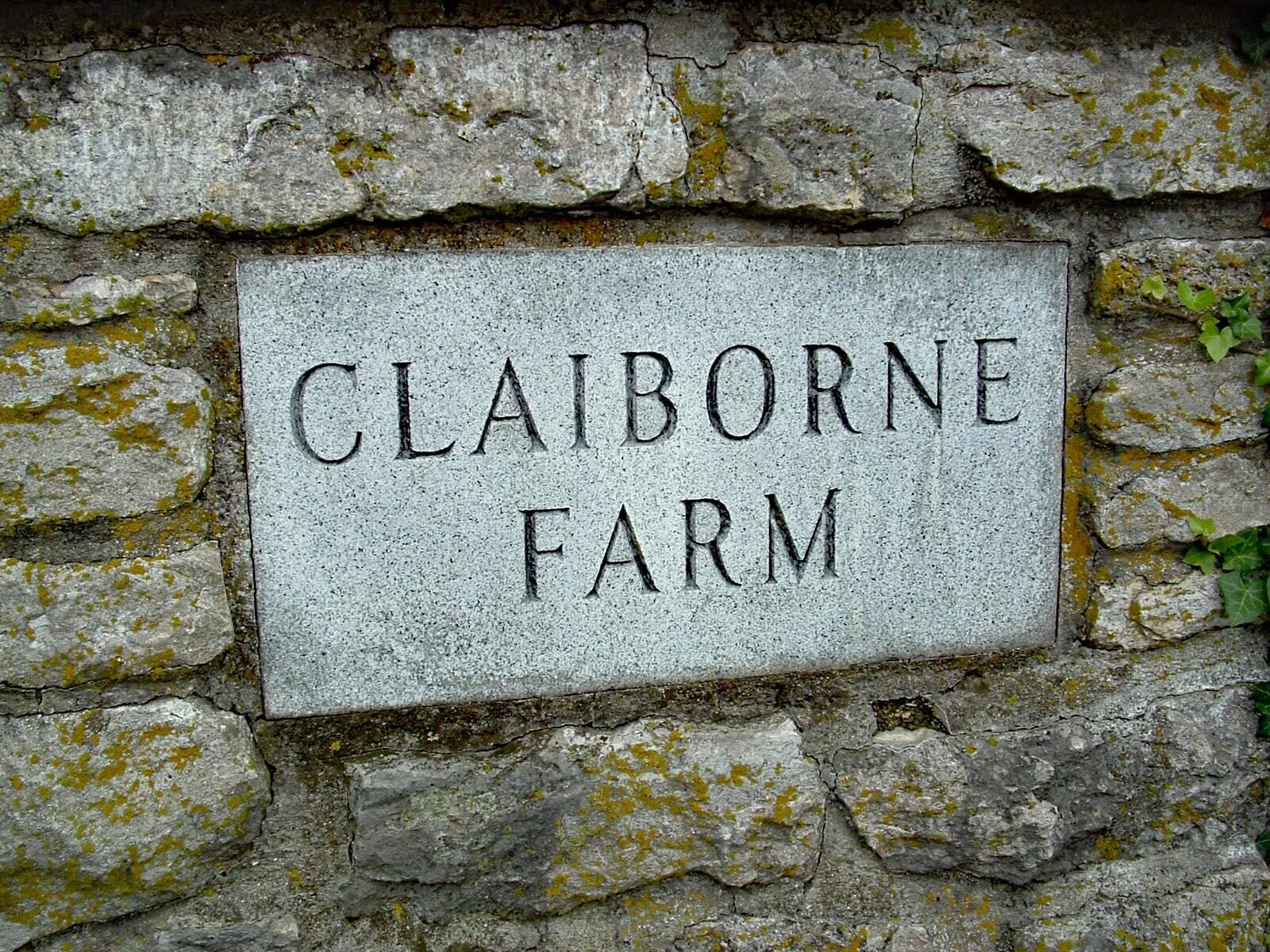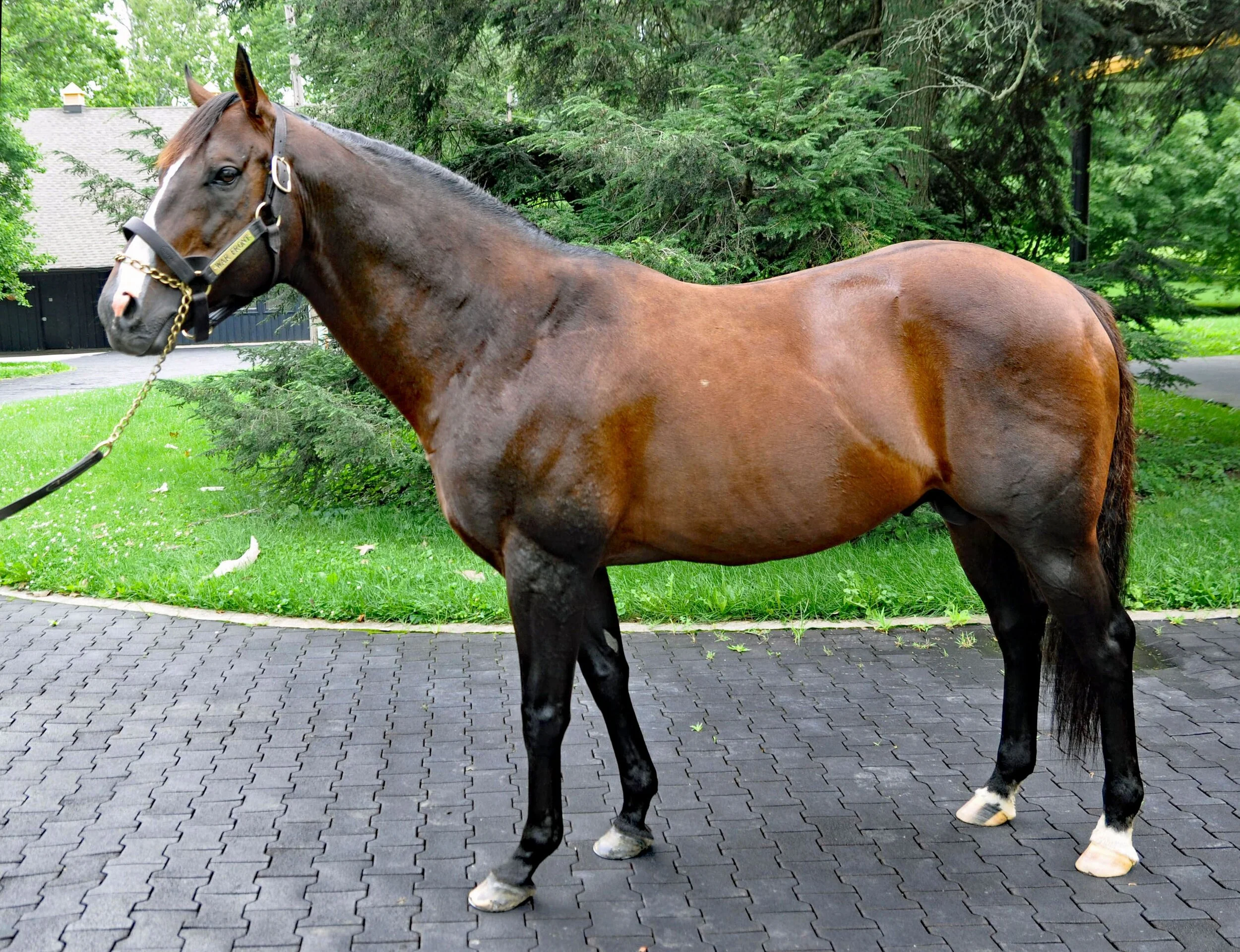









CLAIBORNE FARM
By: Tom Ferry
Another horse inhabits the paddock where he once roamed. In the 30 years he has been gone, several new champions have lived in the stall he used to sleep in. And each year, thousands of fans and visitors come here and pay respects at his final resting spot. Claiborne Farm thrived for many years before the arrival of Secretariat and has continued to prosper since his death in 1989. But his spirit and memory still cascade over these 3,000 rolling acres in Paris, Kentucky and — at times — it feels like he never really left.
Their numbers are staggering.
Claiborne Farm is the birthplace of more than 80 champions. 22 members of the National Racing Museum’s Hall of Fame were foaled and/or raised here. More than 300 champions have been sired by Claiborne stallions, including six of the 13 Triple Crown winners. A total of 29 Claiborne stallions have been the leading sire in North America during a given year, including a remarkable 15 year run at the top of the list from 1955-1969.
Like so many legendary farms, Claiborne is the story of a family — four generations and counting. The farm was established in 1910 by Arthur B. Hancock, who has been called by some the most influential breeder in the history of the American Turf. During a period from 1926-1936, Hancock and a series of syndicate partners purchased two horses who would put Claiborne on a map it has never departed. First came Sir Gallahad, who was the United States Champion Sire four times and sired 65 graded stakes winners, including Triple Crown champion Gallant Fox and Kentucky Derby (G1) winners Gallahadion and Hoop Jr. Ten years later came 1930 Epsom Derby winner Blenheim II, who had a major influence on pedigrees around the world and sired the great Triple Crown champion Whirlaway. In total, Arthur Hancock bred a total of 138 stakes winners and 10 Champions.
As Hancock’s health declined during the mid to late 1940’s, his son Arthur B. (Bull) Hancock Jr. was discharged from the Army in order to come home to help run the farm. When the elder Hancock died on April 1, 1957, Bull Hancock inherited Claiborne and, under his control, the farm eventually grew to approximately 6,000 acres. Hancock expanded the empire his father created behind three powerhouse sires. Nasrullah was a purchase in 1950 and became the sire of 98 stakes winners and the leading sire in North America five times. And Hancock also imported Princequillo, who was a giant among broodmare sires.
In 1954, Princequillo’s son Bold Ruler was foaled at Claiborne. The horse would become leading sire an incredible eight times, the most of any sire in the twentieth century. In the years to follow, horses bred, foaled by or associated with Claiborne would include Round Table, Buckpasser, Damascus, Sir Ivor, Tom Rolfe, Nashua, Riva Ridge and the great Kelso. Claiborne’s run of 15 consecutive years with the leading North American sire ended at the conclusion of 1969. But, ironically, in the very early morning hours of March 30, 1970, an offspring of Bold Ruler was born in a small barn in Doswell, Virginia. His name was Secretariat and the world of Thoroughbred horse racing would never be the same again.
Seth Hancock was a mere 23 years old when his father Bull Hancock died suddenly in 1972 at age 62. The baton had been passed unexpectedly. That same year, Christopher Chenery’s Secretariat was Horse of the Year at age two. Chenery had been ill, however, since 1968 and his daughter Penny Tweedy had taken charge of the family’s Meadow Farm. Tweedy worked in partnership with the young Seth Hancock and syndicated the horse for a little more than $6 million on the condition he be retired from racing at the end of his three year-old season. After becoming the sport’s ninth Triple Crown winner, Big Red ran six more times before retiring to Claiborne at the end of 1973 to begin his breeding career. Secretariat died due to laminitis in 1989 and was buried in the cemetery behind the farm’s main office.
With each passing decade, Claiborne’s success has been unyielding.
From 1980-2012, domination continued in the breeding shed with Mr. Prospector, Danzig and Pulpit. And on the racetrack, Claiborne, along with their longtime business partners the Phipps family, was associated with stirring performances by Personal Ensign, Swale, Lure, Inside Information, Easy Goer, Blame, Orb and so many others.
Claiborne Farm is well-positioned for the future.
In 2014, Walker Hancock took over as the fourth generation to assume control of the farm as Claiborne’s President. After more than 40 years at the helm, Seth Hancock is still there to provide his son guidance, counsel and support. The farm’s collection of stallions is led by the highly successful international sire War Front, whose offspring to-date include eight Champions and twelve millionaires. Claiborne continues to possess a broodmare band of 28 and also owns another 30 broodmares with business partner Adele Dilschneider.
There are few places in the world of horse racing as truly magical and entrenched in history as Claiborne. And few farms have been more accessible and gracious to racing fans and the general public over the years through tours.
Claiborne offers a guided walking tour seven days a week at 10 AM and 11 AM, with the exception of January and February when the tours are held five days a week. Visitors walk the shed rows of the legendary stallion barns, spend time in the historic breeding shed and can pose for photos with and pet some of their favorites including War Front, Blame and Orb. The visit culminates with a stroll through the cemetery adjacent to the farm office where over 20 other iconic horses are buried.
The spirit of Secretariat, Round Table, and so many other equine and human contributors can be felt when walking the grounds here. Across 100 years, each played a role in elevating Claiborne to the world class operation it is today, or as A.B. “Bull” Hancock Jr. used to say, “Doing the usual, unusually well.”